ADVERTISEMENT
import
BILL CLINTON Apology For Forcing Haiti To Drop Tariffs On Imported Rice
Former US President who was one of the architects to provide subsidies to US farmers and presently the Co-chairperson of Haiti's earthquake recovery Commission has now realized that such policy was a 'mistake'--it has not worked in Haiti. There is no doubt that reduced food price was unquestionably a necessity because it allowed people to eat, but at the same time price reductions have also negatively affected rural Haitians. During the 1980's Haiti was self sufficient in rice, but today it imports 60% of its overall food supply and 80% of its rice from US because it is cheaper to import than produce. The farmers during the harvest season are sitting idle in the fertile valleys; dumped foreign rice in the Haitian market has eclipsed Haitian production, farmers are jobless. Huge subsidies received by US farmers have unfairly deflated international prices. As a result poorer nations are finding it difficult to get self-sufficient and develop their economies by expanding markets abroad.
Haiti Receiving Food Aid instead of Agricultural Support
In the months following the 2010 earthquake, the US government has provided $140 million subsidy to US farmers, and USAID sent 90,000 metric tons American of crops to Haiti. Unquestionably, this was a necessity because it fed many. However, in some other senses, these are negatively affecting rural Haitians and farmers in a major way. Instead of receiving food aid if the international donors support Haiti's agricultural sector and provide food to those only in need and purchase the entire Haitian rice crop over the next two years or so, this may help Haiti to become more self-sufficient in agriculture. US food aid programs are practically designed to encourage food imports from US. Haitians are importing 80% of their rice consumption from US because it is cheaper to import than locally produce.
Chicken and egg fight between Haiti and Dominican Republic
Chicken, eggs and other by-products of poultry are once again allowed to cross the border from the Dominican Republic into Haiti. Following a ban on all products of that nature from its closest neighbor earlier this month, Haiti has since entered into an agreement that will see the return of the trade once certain standards and requirements have been met by Dominican Republic exporters and Haitian importers. The Haitian veterinary service must be furnished with a list of all farms in the Dominican Republic which have been deemed free of the avian flu and then permits must be sought to transport the products into Haiti.
Business Opportunities For Ouanaminthe, Fort Liberte, Terriere Rouge, Trou Du Nord, Caracol, Quartier Morin With Caracol Industrial Park
As Haiti is celebrating a rebirth of the country with the new Caracol Industrial Park in the northern of Haiti, President Michel Martelly said Haiti Is Open For Business. Haiti is in dead open for business. I can also say that there are several cities and towns in Haiti that will be open for business as Caracol Industrial Park starts creating jobs and opportunities for entrepreneurs in the area trying to provide services to support the park. We already predict that the following towns will benefit directly and are considered to be prime locations for new businesses. They are Ouanaminthe, Fort Liberte, Terriere Rouge, Trou Du Nord, Caracol, Quartier Morin in northern and Cap-Haitian Haiti. Anything that involve housing, restaurant, healthcare services, Hotels, restaurants and a variety of other business would be considered to be great business opportunities
Top Products Exported by Haiti
Haiti is considered to be a consuming society. Most of the products consumed in the country are imported and consequently cost the country a lot of resources. Some of the most frequently imported products by Haiti in 2008 include: Rice: $199.3 million, Wheat: $64.6 million, Pharmaceutical preparations: $40.3 million, Meat and poultry: $33.8 million and tther foods: $26.8 million
List of products exported by Haiti
Haiti is not a country that focuses on export. It is considered to be among the countries with a weak export capacity. If you take the year 2008, Haiti exported for a total of $490 million worth of goods. Their primary customers include the United States (70.7%), Dominican Republic (8.9%), and Canada (3.1%). Some of the products include: apparel, oils, cocoa, mangoes, coffee and some manufactured goods.
Haiti Export in 2010 compared to Dominincan Republic, Jamaica, Cuba
Here is an analysis of the export in Haiti, compared to other Caribbean islands. According to the figures, in 2010, Haiti exported a total of $530.4 million worth of goods. If you want to compare this with a country like Jamaica, their number is much superior. Jamaica exported for $1.376 billion for the same period. Our neighbor, the Dominican Republic exported for $6.598 billion worth of goods and services. Cuba exported $3.816 billion worth of goods and services in 2010




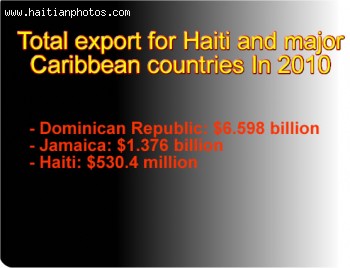
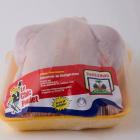 Le Chic Poulet by Haiti Broilers S.A.
Le Chic Poulet by Haiti Broilers S.A.  Gas Station In Haiti
Gas Station In Haiti  Who will be the next president of Haiti?
Who will be the next president of Haiti?  Jovenel Moïse nominated Jean Henry Céant as prime minister of...
Jovenel Moïse nominated Jean Henry Céant as prime minister of...  Haitians, the second largest black immigrant group in the US
Haitians, the second largest black immigrant group in the US 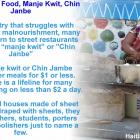 Haiti Street Food, manje kwit or Chin Janbe, for $1 or less
Haiti Street Food, manje kwit or Chin Janbe, for $1 or less  Dr. Henri Ford, First Haitian Dean At University of Miami Med...
Dr. Henri Ford, First Haitian Dean At University of Miami Med...  Former PNH Chief, Godson Orelus, arrested for illegal arm...
Former PNH Chief, Godson Orelus, arrested for illegal arm... 



